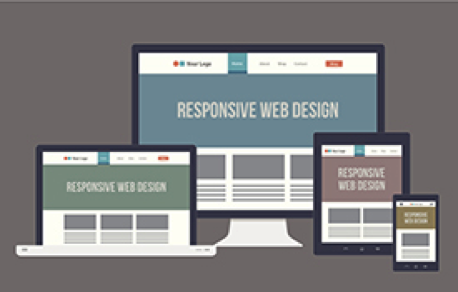Generating Leads w/Mobile Marketing, a Need for Responsive Web Design
 Mobile marketing is as simple as optimizing your marketing strategies for the people using a mobile device – not the device itself. According to a to a Google report, 90% of online users utilize multiple screens sequentially to accomplish a task over time. This means that an individual could start reading your content on their smartphone, continue on a table, and finish on a laptop
Mobile marketing is as simple as optimizing your marketing strategies for the people using a mobile device – not the device itself. According to a to a Google report, 90% of online users utilize multiple screens sequentially to accomplish a task over time. This means that an individual could start reading your content on their smartphone, continue on a table, and finish on a laptop
Mobile marketing means creating a seamless, optimized experience on each of these devices. To do so successfully, we need to be thinking about the responsive design, lead generation, and remote ROI. When you have a responsive design, your website will appear properly formatted and designed across any device.
Mobile Strategy – not just another app
Having a mobile strategy does NOT mean having a mobile app. Start including the concept of responsive web design as part of your mobile strategy. Responsive design is a web design approach that provides an optimal viewing experience from mobile phones, to tablets, to desktop computer monitors. It also makes mobile optimization easier on your end as the marketer.
Benefits of a Responsive Web Design
- Responsive design results in higher conversion – 67% of users are more likely to purchase a product or service from a mobile-friendly site. That means there is a large percentage of people who will leave your site if it is not optimized for their consumption purposes.
- Responsive Design is easier to Maintain than Apps – Even though responsive design looks different on your tablet, mobile device, and desktop devices, it is actually just one device that conforms to the size of the screen. This means you only have to update one version of your website, and it will still be easy to use across all of your devices.
- Responsive Design Improves SEO – First, it is essential to optimize your webpages for keywords you are trying to rank for. By having one responsive website, you will only have to optimize your content once as your pages will automatically update across devices. If you had a desktop and separate mobile version of your site, you’d have two URLs with two sites to optimize. Responsive design consolidates your efforts into one, which also prevents you from publishing duplicate content.
- Responsive Web Design Calls for Better Usability – Responsive design fits into the varying screen sizes mobile devices, allows users to only scroll up and down (versus up and down AND right and left), makes it easier to display large buttons that are easy to click on, and makes the mobile site clean and efficient.
 Generating Leads Through Mobile Marketing
Generating Leads Through Mobile Marketing
Generating leads through mobile marketing requires taking a step back and thinking about ways you can optimize the information and content you already have for mobile experiences. Here are six tactics you can implement to optimize your content for mobile lead generation. If your website is responsive, you are more likely to prevent visitors from bouncing off your site.
- Employ Progressive Profiling Forms – Progressive profiling technology, a feature that is usually an extension of dynamic form fields, allows you to set up iterative forms that enable you to designate which questions appear based on what you already know about a particular lead. That way, every time a lead fills out a form, you are progressively collecting valuable new information about them while keeping your forms short and easy to complete. This enables you to build up the amount of information, or intelligence, you collect about your individual leads without causing more friction in the conversion process. Ultimately, progressive profiling technology enables you to collect the right information from your leads at the right times.
- Create Simple Call-to-Actions – When creating CTAs for your website, think about how they will appear on different devices. You may not want the most visually heavy design as that could be distracting on the small screen of a mobile device or tablet. But you do want an image with clear, readable text. That means short, to-the-point CTAs that get your message across quickly with only a few words.
- Provide Discounts and Customer Loyalty – Another way to measure your mobile presence is through discounts and promotions that will be redeemed through mobile devices. This can be in the form of promo codes, customer loyalty discounts, or even on-location specials.
- Optimize Content for a Mobile Screen – “When you know you are writing for a mobile audience, there are a few rules to live by. First, frontload your content in case people do not get to the bottom of the article. Don’t put the punch line of the article in the last line. Make sure people understand the purpose of the article from the start. Next, make the content easy to digest. Bold your headlines. Make them short and tweetable. Do not write for the purpose of writing, but write concisely. Finally, A/B test some of your content to see what performs better. Does your audience like lists? Do they like “how-to” articles? What are they most likely to fully read, especially on a mobile device?
- Make Your Phone Number Clickable – When someone picks up their mobile phone, they are going to take an action. Whether that’s opening an app, searching for a company, or simply texting a friend, they are much more action-oriented when on their phone versus a tablet or desktop computer.
- Try a Simple Text Campaign – In addition to optimizing your experience for mobile, mobile devices also open the opportunity to start text message campaigns. While marketers have grown accustomed to channels such as email, there is still room for growth in the SMS channel.
Consider the different conversion types you can measure in mobile and how that relates to your business. Are you mainly using an app? Are you using a mobile site? What options and/or buttons are being clicked the most often? What patterns do you know about your customers that can help you assign values to their actions? What data do you already have that can be applied to your mobile presence?
